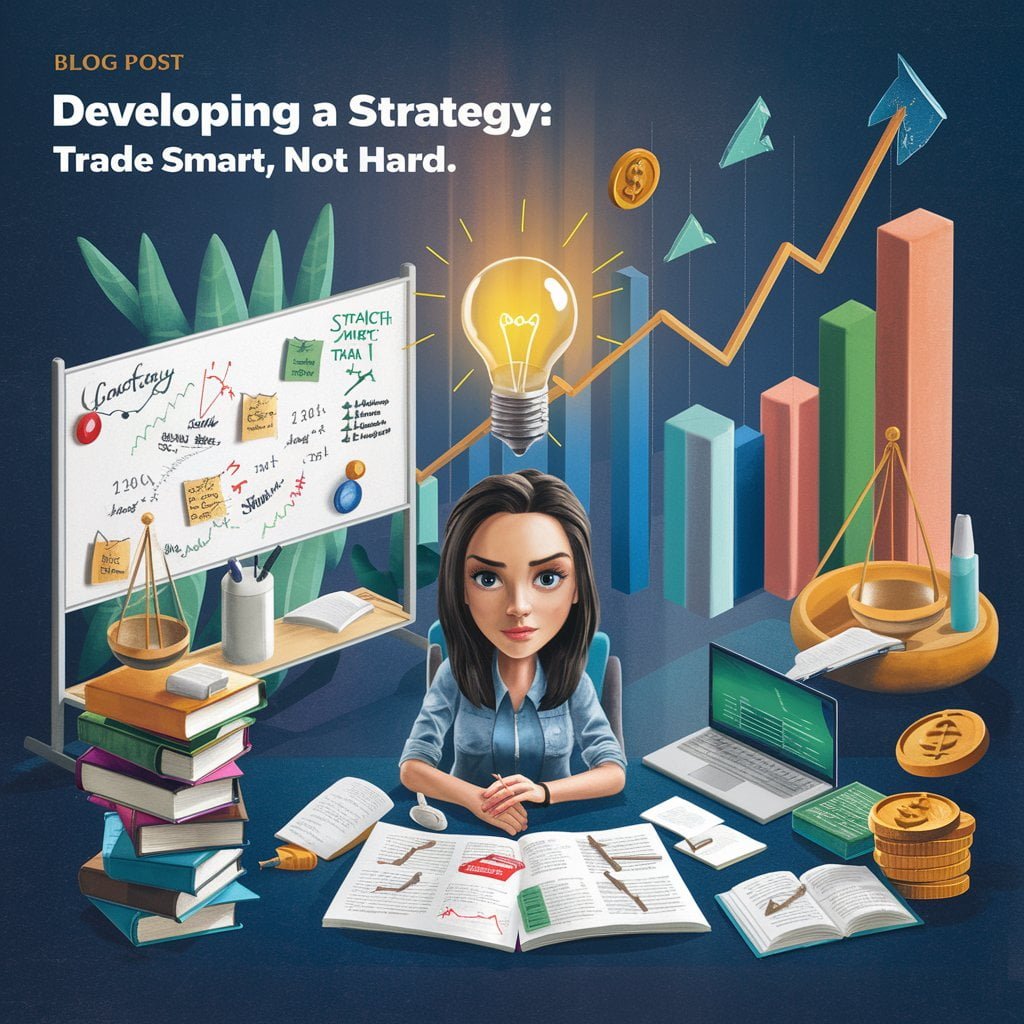From $500 to Success: Day Trading Strategies for Small Accounts

Click Here To Save Time
Time Saver
You don’t need a lot of money to start day trading. Even with $500 to $1,000, you can begin your trading journey.
Using broker tools like leverage and fractional shares allows you to control larger positions or diversify, even with limited capital.
Set stop-loss orders and only risk a small portion of your capital on each trade to protect against significant losses.
Develop a trading strategy that fits your budget, such as scalping or momentum trading, and practice it before risking real money.
Utilize free resources, like paper trading, educational websites, and online communities, to build your knowledge without financial risk.
Stay disciplined, continuously educate yourself, and learn from both successes and mistakes to grow your trading account over time.
Introduction
Day trading often feels like a game reserved for the rich. The common image of traders in expensive suits, throwing around large sums of money, might discourage you from trying it if your budget is tight.
But the reality is that day trading is open to almost anyone with a computer, internet access, and a small amount of money. The key lies in smart, disciplined trading.
This article will show you how to start day trading, even on a tight budget, by covering essential steps, strategies, and real-life success stories.
Understanding Day Trading: The Basics

Day trading means buying and selling financial assets—like stocks or currencies—within a single day to profit from small price changes.
Unlike long-term investing, where you might hold onto stocks for years, day traders close all positions before the market closes. This approach can be profitable but also risky, especially if you don’t have much money to start with.
To succeed, you need to understand the market, have a solid strategy, and be disciplined in following it.
Why Limited Capital Is Not a Barrier

Many think you need a lot of money to start day trading. While having more money can cushion against losses, it’s not a strict requirement.
You can start day trading with as little as $500 to $1,000 if you use the right tools and strategies.
Tools for Budget Traders:
– Leverage: Brokers offer leverage, which lets you control larger positions than your initial capital would allow. For example, with 4:1 leverage, $500 can control $2,000 worth of trades. But remember, leverage can increase both your profits and your losses.
– Fractional Shares: Some brokers let you buy parts of expensive stocks, so you don’t need to buy whole shares. This helps you diversify your investments even with limited funds.
– Low-Cost Brokers: Platforms like Robinhood and Webull offer commission-free trades, lowering the cost of entry for new traders.
– Advanced Tools: Nowadays, small investors have access to advanced trading tools, charts, and market data that were once only available to big institutions.
The First Steps: Setting Up Your Trading Account
If you’re starting on a budget, you need to be careful with every dollar, especially when setting up your trading account.
Step #1. Choose the Right Broker
Look for brokers that offer low or no commissions, fractional share trading, and margin trading. Robinhood, Webull, and TD Ameritrade are popular choices.
Step #2. Understand Account Types
Decide between a cash account, which requires you to pay in full for trades, or a margin account, which lets you borrow money to trade.
Step #3. Fund Your Account
Only invest money you can afford to lose. Start small, with an amount you’re comfortable risking.
Step #4. Practice First
Before using real money, try demo accounts with virtual funds to practice and refine your strategies.
Developing a Strategy: Trade Smart, Not Hard

Once your account is set up, it’s time to develop a trading strategy that works for your budget.
Day trading isn’t about making quick money; it’s about making smart decisions based on research, analysis, and an understanding of market trends.
Types of Day Trading Strategies:
Scalping: Involves making many trades to gain small profits from each. This strategy requires quick decisions and a deep market understanding.
Momentum Trading: Focuses on stocks moving strongly in one direction. The idea is to buy during upward momentum and sell before the peak.
Technical Analysis: Relies on analyzing price trends and trading volumes. Common tools include moving averages and relative strength indexes (RSI).
News-Based Trading: This strategy uses market-moving news, like earnings reports, to make trades that capitalize on sudden price changes.
Risk Management: Protecting Your Capital
When trading on a budget, it’s even more important to manage risks carefully. You can’t afford big losses, so have a plan to protect your capital.
– Set Stop-Loss Orders: These automatically sell your stock when it hits a certain price, limiting your losses.
– Position Sizing: Never risk more than 1-2% of your capital on a single trade.
– Diversify: Even with limited funds, spread your investments across different stocks or assets to reduce risk.
– Stay Disciplined: Stick to your plan and don’t let emotions like fear or greed dictate your trades.
Case Study: The Journey of a Budget Trader
Let’s take a look at Sarah, a young professional who started day trading with just $1,000.
Sarah’s Story: Sarah was always interested in the stock market but thought day trading was out of reach due to her limited savings. After learning about commission-free trading platforms, she decided to try it out with $1,000.
She chose a broker that allowed fractional shares and margin trading and started by investing in stable stocks, using a bit of leverage to increase her buying power.
After six months of disciplined trading, her account grew from $1,000 to $2,500. While this might not seem like much, it was a solid gain considering her small starting capital. More importantly, Sarah developed a good understanding of the market and a strategy that worked for her.
Tools and Resources for Budget Traders
As a budget trader, the right tools can significantly improve your chances of success.
Tool #1. Trading Platforms: Robinhood, Webull, and E*TRADE are good options for budget traders.
Tool #2. Charting Software: TradingView offers advanced charting tools, with free versions that are great for beginners.
Tool #3. Educational Resources: Websites like Investopedia and Babypips offer free, in-depth content for traders.
Tool #4. Trading Communities: Online communities like Reddit’s r/DayTraderAnswers provide valuable insights and support.
Tool #5. Paper Trading: Practice with simulated trading before risking real money.
Conclusion: The Path Forward for Budget Traders
Day trading on a budget is possible and can be a rewarding way to grow your wealth.
Start small, be disciplined, and continuously educate yourself. Over time, with patience and resilience, you can build a solid foundation for success.
Click Here For Our Sources
Sources
Investopedia: https://www.investopedia.com
Babypips: https://www.babypips.com
TradingView: https://www.tradingview.com
Reddit’s r/DayTrading: https://www.reddit.com/r/Daytrading/
Webull: https://www.webull.com
Robinhood: https://www.robinhood.com
E*TRADE: https://us.etrade.com
Leave a Reply
You must be logged in to post a comment.